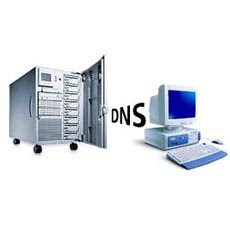You have your MCSA on Windows Server 2003 and you want to upgrade to Windows Server 2008. Or you are not certified at all and want to earn the MCTS on Windows Server 2008. The first thing to remember is that this is a series of new certifications and while there is an upgrade path, you are not earning an MCSE on Windows Server 2008 rather an MCTS or MCITP on windows Server 2008. Also remember that the era of the MCSA/MCSE certifications has ended – it is now MCTS and MCITP (and others beyond the scope intended here) and have an entirely different focus.
As I stated in an earlier blog – the Microsoft Certified Technology Specialist (MCTS) has a different focus then the Microsoft Certified Information Technology Professional (MCITP) and the former is not a prerequisite for the latter either (and nor is it a “lesser” certification!). The MCTS certification is aimed at IT Professionals who work with a specific Microsoft product or platform. An IT Pro who has earned their MCTS is expected to possess depth and breadth of knowledge and skills on a particular product or platform. They are expected to manage and maintain the product or platform on a daily basis. They are also more concerned with the day-to-day operations and short term planning rather than long term planning and design and design.
There are three MCTS tracks available: MCTS: Windows Server 2008 Active Directory Configuration; MCTS: Windows Server 2008 Network Infrastructure Configuration and MCTS: Windows Server 2008 Applications Infrastructure Configuration. You can take each of the tests individually, or you can take the upgrade path by taking only one test.
The easiest route to upgrade your certification, if you are already an MCSA on Windows Server 2003, is take (and pass, of course) the 70-648 TS: Upgrading your MCSA on Windows Server 2003 to Windows Server 2008, Technology Specialist exam. Passing this exam will earn you the: MCTS: Windows Server 2008 Active Directory, Configuration (equivalent to the 70-640 exam) and the MCTS: Windows Server 2008 Network Infrastructure Configuration (equivalent to the 70-642 exam). The last of the three MCTS certifications - MCTS: Window Server 2008 Application Infrastructure Configuration is earned by passing the 70-643 exam. The other part to earning your MCTS on any one of the three paths is to pass the 70-646exam (Windows Server 2008, Server Administrator.
As you can see, the upgrade path from MCSA Windows Server 2003 to MCTS on Windows Server 2008 is straight forward – a far cry from the old 70-240 exam!
Source: networkworld.com
Is This for You? This document set is written to meet the requirements of IT professionals who are responsible for the planning, design, deployment, and operations of file and print services in an enterprise environment. The readers of this document set are expected to have an understanding of its technical details; however, service-level expertise is not needed to follow the enterprise-level discussions and to understand the decisions that are made.
Organizations need to share, store, retrieve, and print information in an efficient, cost-effective, secure, and reliable manner. Information may exist in the form of static files, such as large format architectural drawings and external brochures, software code and executable, plans and presentations, pictures and spreadsheets. Information may also take the form of dynamic data such as databases, event logs, or captured video streams. In each case, information exists as collections of files and is managed accordingly.
As the amount of data increases, the cost of storage and maintenance also increases due to administrative and hardware overheads. A number of studies have shown how data growth continues to be exponential while the resources available for managing data remain flat or the area reduced. It is important to ensure that users can access data quickly and easily and that it can be managed efficiently.
Organizations also need to be able to publish and print information in hard copy format, whether for legal, business, or personal requirements. They need to print on multiple devices having multiple attributes at different times of the day. They must also provide users with the ability to find and use printers easily without requesting assistance from the IT support organization.
In addition, printing assets need to be managed securely and kept online and available at the same time. File and print services are critical for users and applications within information technology (IT) environments. However, these services are often ignored during the IT infrastructure design phase, which leads to environments where printer and file repositories appear in ad hoc fashion without clear strategies for their management. Planning for these services is vital; requirements of the users and applications need to be assessed and available technologies matched to the requirements in order to provide a supportable package of technologies and services.


